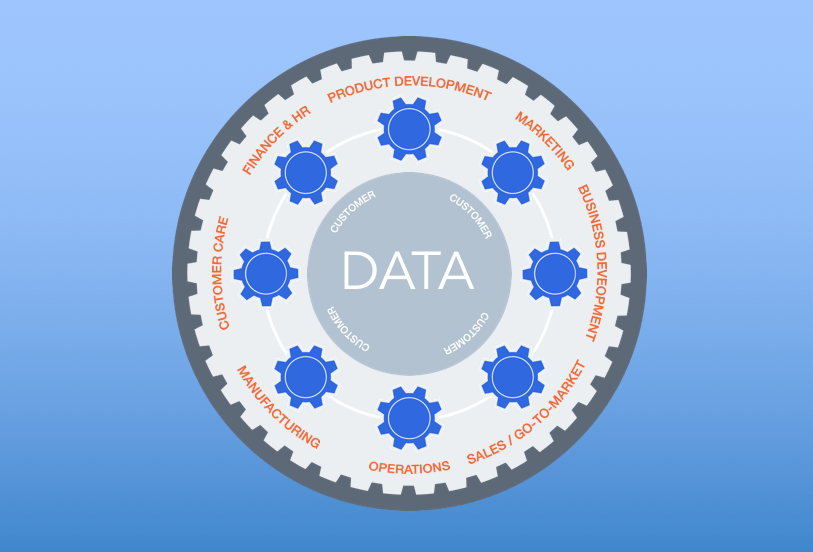
How Data can align Departments
It is not unheard of for departments to focus their tasks in silos. They will act with little regard to how their decisions will impact other departments. However, data can solve the gap that for years has been growing wider.
How often do you hear these complaints?
- Sales complain about the lack of leads or lead quality?
- Analysts who cannot calculate something because of the lack of usable data?
- Customer service department that has a hard time tracking customer’s information due to the inability to locate them without an identifier?
All those problems and more can be solved with good quality data and proper integration between the different tools which different departments use.
B2B Example
In an example B2B organization, if the marketing department uses marketing automation tools that are connected to the same CRM that the sales department uses, half of the problems would be solved. The other half is ensured by the marketing department passing the data needed for sales managers to qualify their leads. The only way to do this is to analyze which leads are qualified and converted based on the data points identified by the sales team. Once that data gets passed back to marketing, a marketing analyst can improve their lead scoring and therefore pass better leads to sales in a win-win scenario.
A call with John Smith
Now consider, a customer service rep that is on the phone with a customer who gave them the name, ‘John Smith.’ In the system, they are able to see over fifteen accounts with the rather common name, ‘John Smith.’ Clearly more information is required for the service rep to help this customer. They could improve their search by filtering on other identifiers, such as phone number or even their purchase history. Without these extra identifiers, the customer service finds themselves stuck with opening each record to identify the right person, which will be extremely time consuming and test the patience of the customer.
To add further complexity, it is possible that more than one of these John Smith accounts are actually the customer the rep is talking to. A duplication issue has arisen, causing the customer’s information become fragmented across multiple accounts. The rep’s problem has now changed from difficult to impossible since no single account contains the full picture.
The right John Smith has three different accounts which should be merged. The problem has gotten so bad that he called to complain about three different bills that he receives from the company on an ongoing basis.
A better CRM could have solved this issue, preventing this unfortunate call from ever happening.
The Analyst’s Annoyance
Sabrina is an analyst who is trying to calculate ROI on the latest marketing initiative. Direct marketing team has sent 100,000 direct mail pieces to the selected group of people. She quickly realizes that marketing team forgot to label what group of people received the promotion, making it impossible for him to do a proper ROI.
By contacting the person in charge, she was able to retrieve the full list. But now she has to match the list to all the prospects in the database followed by identification of how much they bought before and after the promotion.
Having proper system would allow her to assign different campaigns to different prospects and would have solved half of Sabrina’s problems.
The other issue is to have proper segmentation abilities to be able to quickly understand what segment of those that had been mailed were profitable. Good segmentation comes from the standardizing of fields such as country, state, age group, gender, household income, job title, industry, purchased product categories and so on.
These are just some examples of how good quality data can help departments come together for a common goal. Starting with proper system integration and maintaining cleansed data will help start a dialogue between departments which is much needed in some corporations.